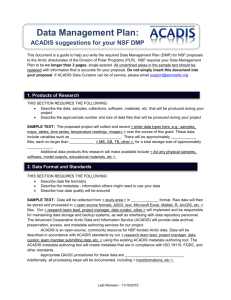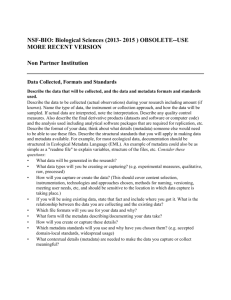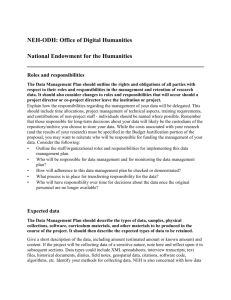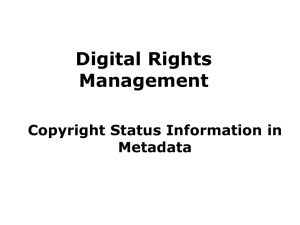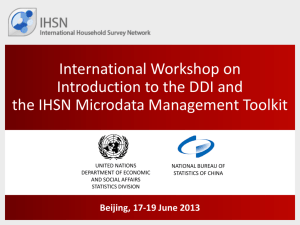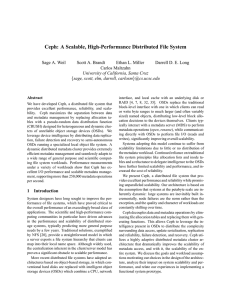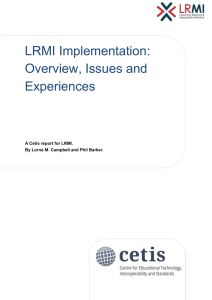Materials Research - Columbia University
advertisement
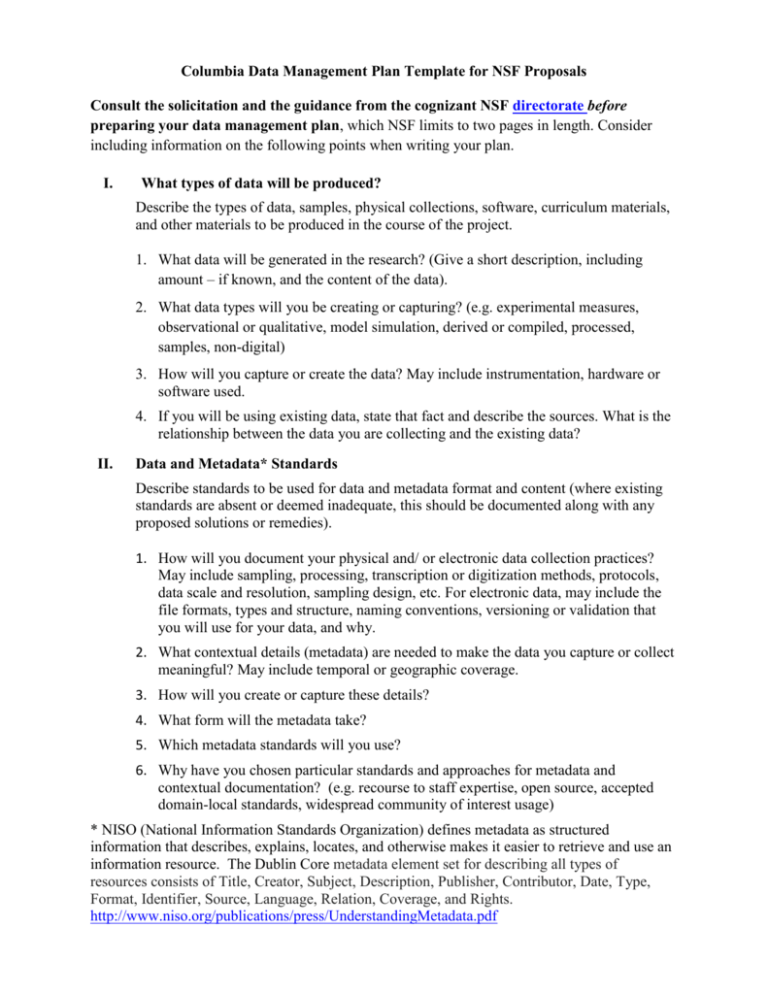
Columbia Data Management Plan Template for NSF Proposals Consult the solicitation and the guidance from the cognizant NSF directorate before preparing your data management plan, which NSF limits to two pages in length. Consider including information on the following points when writing your plan. I. What types of data will be produced? Describe the types of data, samples, physical collections, software, curriculum materials, and other materials to be produced in the course of the project. 1. What data will be generated in the research? (Give a short description, including amount – if known, and the content of the data). 2. What data types will you be creating or capturing? (e.g. experimental measures, observational or qualitative, model simulation, derived or compiled, processed, samples, non-digital) 3. How will you capture or create the data? May include instrumentation, hardware or software used. 4. If you will be using existing data, state that fact and describe the sources. What is the relationship between the data you are collecting and the existing data? II. Data and Metadata* Standards Describe standards to be used for data and metadata format and content (where existing standards are absent or deemed inadequate, this should be documented along with any proposed solutions or remedies). 1. How will you document your physical and/ or electronic data collection practices? May include sampling, processing, transcription or digitization methods, protocols, data scale and resolution, sampling design, etc. For electronic data, may include the file formats, types and structure, naming conventions, versioning or validation that you will use for your data, and why. 2. What contextual details (metadata) are needed to make the data you capture or collect meaningful? May include temporal or geographic coverage. 3. How will you create or capture these details? 4. What form will the metadata take? 5. Which metadata standards will you use? 6. Why have you chosen particular standards and approaches for metadata and contextual documentation? (e.g. recourse to staff expertise, open source, accepted domain-local standards, widespread community of interest usage) * NISO (National Information Standards Organization) defines metadata as structured information that describes, explains, locates, and otherwise makes it easier to retrieve and use an information resource. The Dublin Core metadata element set for describing all types of resources consists of Title, Creator, Subject, Description, Publisher, Contributor, Date, Type, Format, Identifier, Source, Language, Relation, Coverage, and Rights. http://www.niso.org/publications/press/UnderstandingMetadata.pdf See also MIT Guide http://libraries.mit.edu/guides/subjects/data-management/metadata.html III. Policies for access and sharing and provisions for appropriate protection/privacy Access and sharing 1. How will you make the data available? Will it be deposited in a publicly available database, available for download from a web site, available upon request? (May include physical and cyber resources needed: equipment, systems, expertise) 2. Will access be open or restricted to specific user groups? Will there be any fees for accessing it? 3. Does the original data collector/ creator/ principal investigator retain the right to use the data before opening it up to wider use? Provisions for appropriate protection of privacy, confidentiality, security, intellectual property, or other rights or requirements 1. Are there compliance, privacy, confidentiality or security issues? 2. If so, how will these be resolved? (e.g. anonymization of data, institutional compliance committees such as Institutional Review Board, formal consent agreements.) 3. Is the data 'personal data' in terms of the Data Protection Act 1998 (the DPA) or Personal Health Information covered by HIPAA and HITECH? If so, what provisions have been made to ensure compliance? 4. Is the dataset covered by copyright? If so, who owns the copyright or other intellectual property rights? [Columbia University Copyright Policy] 5. When will you make the data available? Give details of any embargo periods, restrictions or delays on data sharing needed to protect confidentiality, copyright, patentable data, or right-of-first use.) IV. Policies and provisions for re-use, re-distribution, and the production of derivatives 1. Will any restrictions need to be placed on the data regarding re-use or re-distribution? (e.g. licensing or contractual limitations) 2. Who is likely to be interested in the data? Include both individuals and organizations. 3. What and who are the intended or foreseeable uses /users of the data? 4. Are there any reasons not to share or re-use data? (Suggestions: ethical, nondisclosure, etc.) 5. How will you manage access arrangements and data security? V. Plans for archiving and preservation of access Plans for archiving data, samples, and other research products, and for preservation of access to them. For those who are using Columbia's institutional repository Academic Commons, here is some descriptive text to use in your plan: Deposit in Academic Commons provides a permanent URL, secure replicated storage (multiple copies of the data, including onsite and offsite storage), accurate metadata, a globally accessible repository and the option for contextual linking between data and published research results. Files deposited in Academic Commons are written to an Isilon storage system with two copies, one local to Columbia University and one in Syracuse, NY; a third copy is stored on tape at Indiana University. The local Isilon cluster stores the data in such a way that the data can survive the loss of any two disks or any one node of the cluster. Within two hours of the initial write, data replication to the Syracuse Isilon cluster commences. The Syracuse cluster employs the same protections as the local cluster, and both verify with a checksum procedure that data has not altered on write. 1. What is the long-term strategy for maintaining, curating and archiving the data? 2. Which archive/repository/central database/ data center have you identified as a place to deposit data? 3. What transformations will be necessary to prepare data for preservation and sharing? (e.g. data cleaning/ anonymization where appropriate.) 4. What metadata/ documentation will be submitted alongside the data or created on deposit/ transformation in order to make the data reusable? 5. What related information will be deposited (e.g. references, reports, research papers, fonts, the original proposal, etc.) 6. What is the period of data retention? How long will/ should data be kept beyond the life of the project? 7. What procedures does your intended long-term data storage facility have in place for preservation and backup? May include frequency of back-up, location, and testing. 8. Are software or tools needed to access the data and will these be archived? 9. How will compliance with this plan be managed? Who will be responsible for data management in the research project? Adapted from work made available under the terms of the Creative Commons Attribution-ShareAlike 3.0 license, (c) 2012 by the Rector and Visitors of the University of Virginia.




